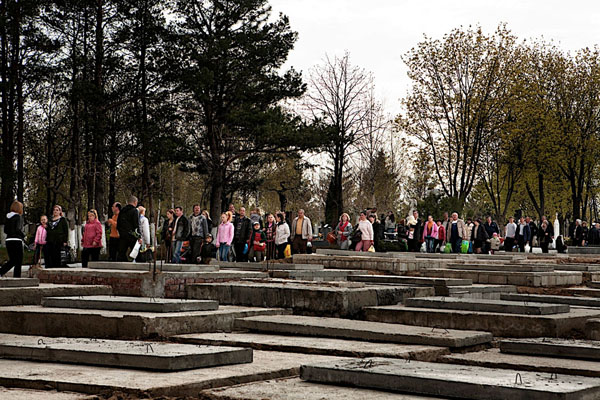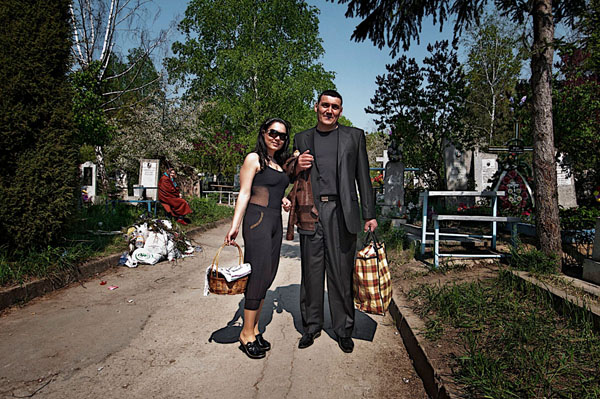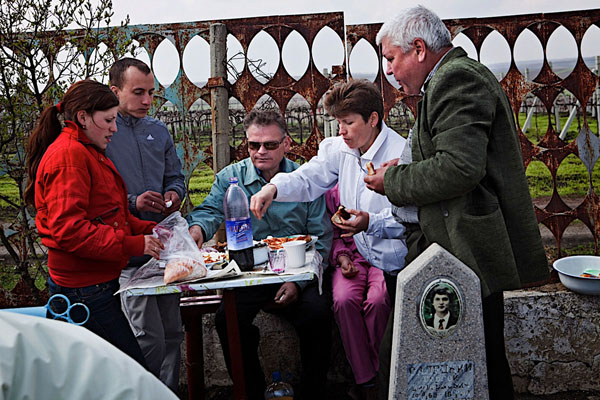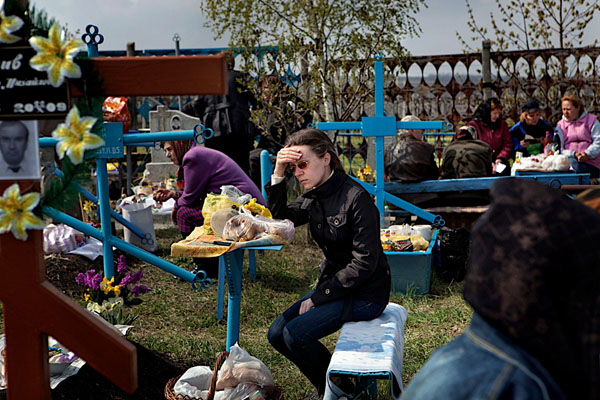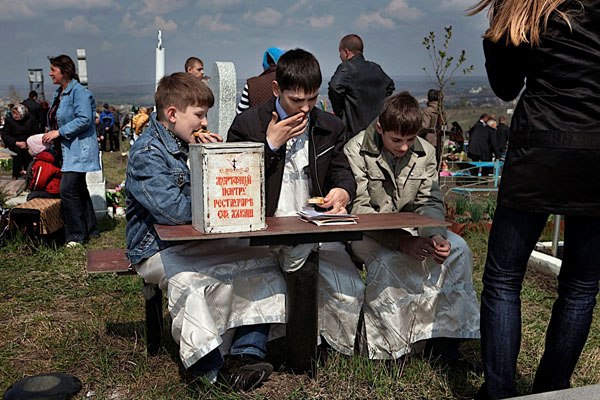These are the artisanal shers of the Mediterranean, strong men and women who work on the waves.This is a sea of fragile treasures.
These pictures tell two sides of their story. First, they’re a window into an ageless way of life – traditional shers doing what their families have always done, embracing a shared heritage across the Mediterranean that still plays an important part in coastal cultures today.
But they also warn of the end of an era: these pictures could be documenting the last generation of small- scale shers we’ll ever know. In an ancient sea pushed to its limits by modern pressures, their future is hanging on a knife-edge.
Over shing, pollution, climate change – these are powerful, growing forces and they threaten the Mediterranean Sea and the shers who depend on it. Soon, unless things change rapidly and radically, there may be no more sh and no more shers.
It doesn’t have to end like this. Across the region, shers and conservationists are ghting to protect the Mediterranean Sea. It’s not an impossible task – it’s an essential one. Coastal sheries really do have the potential to become sustainable.
These photos were taken in and around 11 Marine Protected Areas in six countries, where shing is restricted or banned completely – but instead of reducing catches, these measures increase local stocks of the many different species which sustain artisanal shers. Across the Mediterranean, Marine Protected Areas are a central pillar supporting long-term efforts to maintain the sea’s biodiversity and ecosystems.
Fishers can play a vital role in the management of Marine Protected Areas, working closely with conservationists on many activities, from data collection to surveillance: collaboration gets better results. And the ones with an eye on tomorrow aim for sustainability in everything they do: they don’t catch more than they need, they don’t take out more than the stocks can bear – they know they have to catch sh next year, too.
Put like that it sounds so easy, but life at sea is never easy.There are so many minds still to change, so
much still to do. Nobody doubts that putting the small-scale sheries of the Mediterranean on the road to sustainability will need huge collective commitment from shers, governments, scientists and conservationists – and they’ll need us, the consumers, to support them too, choosing sustainably caught sh and telling our families and friends why it matters.
Spread the word: this is a future worth ghting for.
(text by Anne Remy)
By Carlo Gianferro & Tommaso Ausili / Roam Photography
The scan of a simple souvenir postcard, depicting St. Peter’s dome under an electric blue sky, is the backdrop for a very special photographic set: St. Peter’s dome and its famous colonnade as we all wish to enjoy, in a sunny day and with no one around, few steps away from the real one. The pilgrims, taken off the human flow of the religious tourism, find themselves isolated from the background noise of the street in the silence of the Studio. So, just before entering Saint Peter’s square, young seminarians, cheerful nuns and priests, souvenir sellers and families coming from all over the world stop by the Studio to have their portrait taken.
The images of ROMA INTERIORS allow us to enter into the intimacy of the Roma houses where interiors are represented with its inhabitants in order to solder the connection between the life and the lived. The people, the inhabitants and the owners were photographed quickly, without prior preparation, aesthetic tricks or any special choice of clothes: what you see is what there is, what there was at the time of the shooting, what there is every day.
Women with sumptuous traditional costumes and hairstyles that have remained unchanged over time; men who owing to their dealings outside of their community wear Western clothing; youths wearing the universal fashions of today’s youth everywhere, yet all of these sharing a common background characterized by creativity, color, splendour, and cultural tradition.
GYPSY INTERIORS is above all a real and accurate portrait of current Romani/Gypsy society, which is still, as it has always been, based on the family, and the house is the backdrop against which the family is represented. Money and the home are the two main parameters which show the other members of the community the importance and power of the family. In this the Roma don’t deviate from universal motivations, but they articulate it in their homes with an innate and personal expression, with the concepts of luxury, prosperity, and especially power represented by decorative overabundance.
Colours are essential to the gypsy people and, as with the women’s costumes, colour covers everything, both the inside and the outside of the houses, making fantastic, unreal buildings - as fantastic and unreal as the dream, the desire of having a house, a stable place for a people that for hundreds of years has roamed far from it’s place of origin .
Freedom, and the intelligent use of it, has allowed the Roma community to redeem itself in the most obvious and confrontational way possible, using rocks, concrete, iron, wood, plaster, and metal to build these monuments to their desires, and into which they then move to live in a joyous, colourful, world of their own
(text by Patrizio Corno)
In the Italian city of Trieste, there is a saying that sounds like “Every bar has its mad!” .
This particular expression is not just related to mental patients but also to humans contemplated in all their facetings. It refers to all the people who live in the city and spend most of their timein bars, the ideal convivial place, a place where some people could be judged for their “non standard” behaviours that put them in the centre of attention. But most of the times this way of saying refers to the “mad” people who live in the city.
Trieste was the first city to open the doors of asylums and the first that welcomed in the street the “mad” people set free by Dr. Basaglia. Trieste had to quickly adapt to the new situation that its citizens accepted with joy, improving relationships with these new individuals.
Psychiatrist Franco Basaglia opened the doors of mental hospitals in early 80's to give back these people the dignity of being persons. He claimed that doctors have to cure mental diseases but also
participate, listen and relate, in part empathize, to help the patient establish social relationships with the outside life; he argued that patients do not need only treatments, but only human relations.
The disease is not a disease, but only a uncomfortable life.
The project does not intend to label people but tell about this particular reality in Trieste, where the "crazy" people does not appear like Martians dropped into the earth, but normal human being who attend these places, exactly like everyone, and relate to other people in their special way to describe the life.
(text by Renata Calzi)
"Love is a serious mental disease"
We'd better start from this sentence of Plato to talk about the love story of Gabriele & Donatella and their psychic conditions. The meaning of the ancient greek philosopher’s sentence describes the emotional state that love could provoke in all of us, carrying us to emotional extreme states, to psychological excitements and irrationality, love takes away our faculty of evaluating reality. If love is a serious mental disease I think we all are happy to be mad. Donatella and Gabriele are happy. Their lives are consequences of families who couldn't express their emotionality since childhood, this loss of emotionality bought
them to psychic sufferings and periods in sanitary structures. In 2005 they got married, from the moment they met, they support each other, they have everything they couldn't have before and fully share everything. They work as actors at a theatre academy for "mad people" in the italian city of Trieste. Trieste was the fisrt city in which psychiatric hospitals where closed and gradually replaced by a whole range of community-based services, including settings
for acute in-patient care, This happened thanks to battles of the psychiatrist Franco Basaglia who obtained in 1978 the law 180. Dr. Basaglia claimed that doctors have to cure mental diseases but also partecipate and help the patients to establish social relationships with the outside life;
he argued that patients do not need only treatments, but also human relations, Charlie and Donatella are a succesfull result of this far-sighted view of Dr. Basaglia.
(text by Renata Calzi)
La tavola rappresenta ancora un momento in cui la frenesia quotidiana si placa e la famiglie con le proprie dinamiche si ritrovano come nucleo. Il quartiere intorno a Piazza Vittorio rappresenta una delle aree più eterogenee, ma insieme più popolari di Roma, in cui la tavola e la cucina diventano uno specchio in cui le famiglie possono rivelarsi come comunità non solo nel loro aspetto sociale ma anche culturale
It can be trigged by something as trivial as a dispute between neighbours or a disagreement among family; an incident that, anywhere else, might be forgotten with the passage of time or left to the authorities to resolve. But in northern and central Albania, where an ancient code of conduct known as the kanun still regulates life for a large portion of the population, it can descend into a blood feud spanning generations and forcing entire families into confinement.
(text by Vincenzo Mattei)
2014
The Sao Pedro Psychiatric Hospital, founded in 1874, was the first psychiatric institution in Porto Alegre (Brazil). its complex, once very interesting from an architectural point of view, is now decaying and run down. The hospital was built according to the idea of a city within a city, in order to fulfill a segregation of “madness". From 2001 new policies are pursued in order to reduce the number of inmates through external medical treatments. Today the hospital hosts 246 inmates, unlike 1970 when they were around 5,000. The 2001 federal law, based on the reform operated by italian psychiatric Franco Basaglia, aims to turn the Psychiatric Hospitals from a place of segregation into institutions involved in the care of mental health. The inmates are not only those who are seriously ill, but also those who suffer for the lack of family members or for extreme poorness . Walking through the halls, the rooms, the lounge or the common you come across the “remainders of madness", the result of former incorrect treatments. You can feel their deep pain; you can hear the suffering screams caused by the responsibilities of the previous institutions. The new treatments aim to grant a decent life to all patients. Doctors, nurses and the staff are trying to apply new psychiatric methodologies, with the hope that in the future such photographs won’t be no longer seen.
2013
(text by Renata Calzi)
Israeli members of the Boycott, Divestment and Sanctions movement explain why they want the world to stop supporting their state while activists explain how do they fight for palestinian rights!.
2012
One third, this is the share that, in the opinion of most of the Muslim Brotherhood members, will take their political party Freedom and Justice in parliament in the forth coming elections. The MB are preparing totake power, but they do not want to do alone, they want to share the responsibility to rebuild Egypt with other political forces
2011
Who are Hezbollah? In the collective imaginary they are like a clan of Islamic terrorists that operates in Middle east, but it is a political party of Islamic religion whose representative are part of the parliament.
Undisputed and charismatic chief is Hassan Nasrallah that brought Hezbollah at the top of the political heights in Lebanon.
Politically active in south Lebanon , they provide social activities for the population exhaust for numerous wars and conflicts.
2011
(text by Renata Calzi)
Israel and Palestine, two populations and cultures that attract and repel each other in a conflict that has lasted for far too many decades. But the people living there, in that area of land close to the thin white line, are all alike and their daily lives are so similar that it seems impossible not to try to photograph them in order to understand that the current division may be real but is, at base, fictitious.
2010
(text by Renata Calzi)
For two days each year one week after Orthodox Easter the dead in cemeteries Moldovan gather the family to spend several hours in joy.
Relatives arrive serene and smiling, full of cloths and food and prepares the tomb ready for lunch with the dead.
The population passes through the narrow streets with their families and prays and blesses round ciambelloni (Colac) topped by long,
narrow lighted candles on top and pour a glass of wine in the ground next to the tombstones.
At the end of the rite of the dead guests sit around the grave or at a table placed in the fence and start eating, chatting and laughing loudly to the health of their loved ones. It is a very cheerful and lively party but also spiritual.
The dead are not only weep and mourn but also to meet and make them participate, at least virtually, to the everyday family life.
The dead do not speak but watch from above, partecipate and thank.
2009 - 2010
(text by Renata Calzi)
